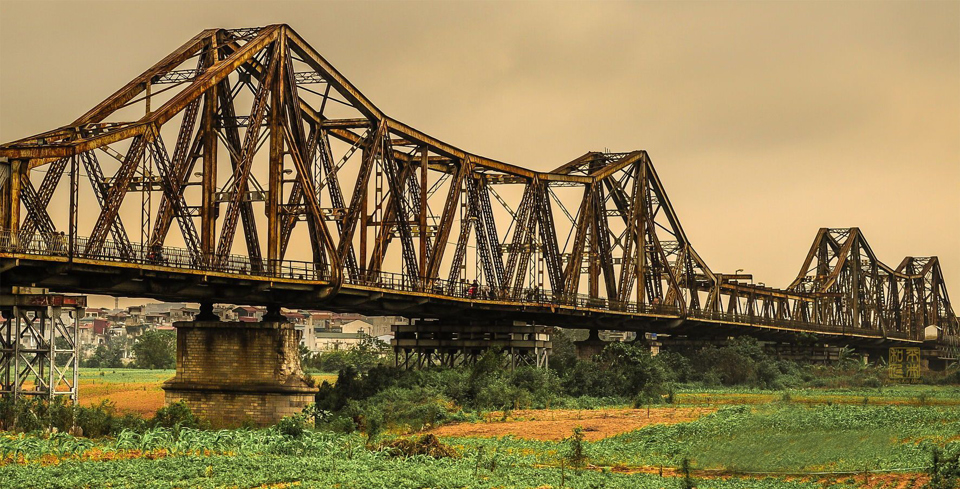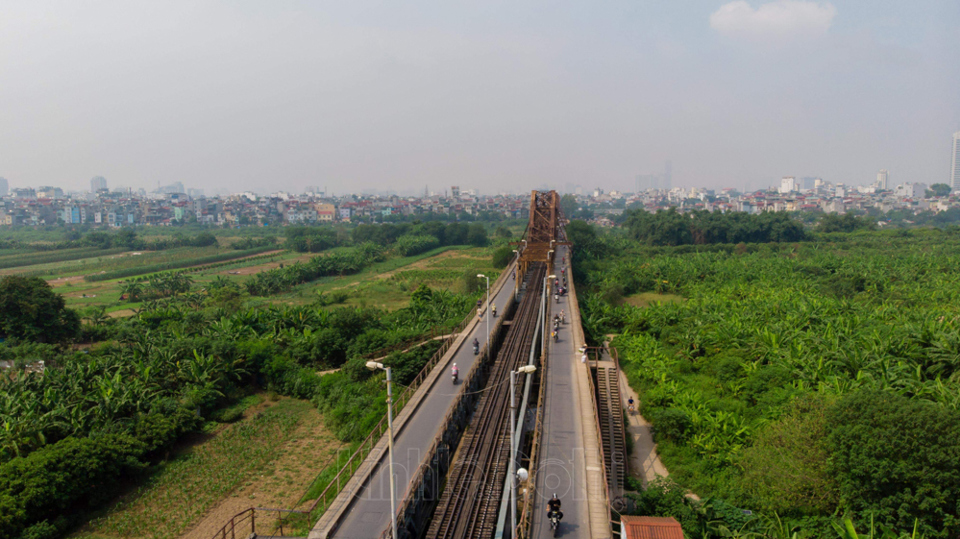Long Bien District: A thriving region of Hanoi
Long Bien District is both the northeastern gateway to Hanoi and a rapidly developing business and investment hub.
Long Bien District is Hanoi's only metropolitan area on the Red River's left bank. As the gateway to the capital city from the northeast, the district is capitalizing on its position to accelerate economic and investment growth.
History and development
Since time immemorial, river deltas have always been chosen by humans for settlement. The land of Long Bien, on the banks of the mighty Red River, is the place where the traces of Vietnamese society have been recorded since the early days of the country's founding.
The administration of Long Bien changed hands through various dynasties. It belonged to the Thien Duc district during the Ly dynasty (10th century), then to the Thuan An district during the later Le dynasty (1428-1789), and later to Bac Giang City and Bac Ninh Province during the Nguyen Dynasty (1802-1945).
| The Long Bien Bridge is the historical witness after which the district has been given its name. Photo: Viet Dung/The Hanoi Times |
Long Bien District was established as a sub-municipal administrative division of Hanoi by government decree on November 6, 2003.
It consists of 14 wards, namely Bo De, Cu Khoi, Duc Giang, Gia Thuy, Giang Bien, Long Bien, Ngoc Lam, Ngoc Thuy, Phuc Dong, Phuc Loi, Sai Dong, Thach Ban, Thuong Thanh, Viet Hung.
Long Bien District borders Gia Lam District to the East and South, Tay Ho, Ba Dinh, Hoan Kiem and Hai Ba Trung districts to the West, Hoang Mai District to the Southwest, and Dong Anh District to the North.
Long Bien is associated with the national hero Ly Thuong Kiet (1019-1105). According to historical literature, Ly Thuong Kiet's origins can be traced back to Co Xa district before he moved to the north bank of the Red River, which is now under the jurisdiction of Ngoc Thuy Ward of Long Bien District.
Long Bien is also home to Tu Dinh, an ancient village (currently in Long Bien District) with a rich history spanning nearly two millennia. This site pays homage to General Thanh Cong Tuong Liet, who served during the reign of the Trung Sisters (14-43), namely Trung Trac and Trung Nhi, whose uprising against the Chinese Han invaders was one of the first in Vietnamese history.
The village of Tinh Quang (Giang Bien) has a communal house dedicated to the veneration of Ly Bi, a brave warrior from the 6th century who fought against the Chinese Liang army. After successfully driving out the invaders, he founded the Van Xuan state, the meaning of the land of eternal spring and was the first person to establish the capital in Thang Long.
Thanh Am communal house (Thuong Thanh) worships Nguyen Binh Khiem. In 1535, he was the valedictorian of the court examination under the Mac dynasty. He was famous as a teacher and respected by the whole country. He left behind countless outstanding works of poetry and a treasure trove of prophecies.
Long Bien today
Hanoi's Long Bien District has been rapidly urbanized with many modern housing developments such as Viet Hung, Vinhomes Riverside, and Hanoi Garden City.
Long Bien is connected to three major economic regions in the north: Hanoi, Haiphong, and Quang Ninh via National Highway 1A, National Highway 1B, and National Highway 5.
In Long Bien, the focus is on building on the Red River to support industrial expansion and the movement of goods.
These are the basic favorable elements for the robust and sustainable socio-economic development of Long Bien district:
Long Bien Bridge, formerly named Paul Doumer Bridge after the Governor General of Indochina, is a vital link across the Red River connecting Hanoi's Hoan Kiem and Ba Dinh districts with Long Bien District. Built between 1898 and 1902 by the French company Daydé & Pillé, the bridge was officially opened in 1903.
| Linking Hanoi's Hoan Kiem and Ba Dinh districts with Long Bien District, the Long Bien Bridge provides a vital connection across the Red River. Photo: Ngoc Tu/The Hanoi Times |
In the early years of the 20th century, Long Bien Bridge was considered an ideal place for young people to breathe fresh air, enjoy the vast and picturesque scenery of the Red River, and buy snacks from the small shops that lined the area.
After enduring wars and historical upheavals, the Long Bien Bridge has fallen into disrepair, while other bridges have been built across the Red River. But its long history, beautiful location, and vintage architecture have made the bridge a landmark of Hanoi.
AEON Mall: is a large shopping center in Hanoi built in 2015. It covers an area of 5.6 hectares and has a unique Japanese layout, which greatly impressed customers when it opened.
Once visitors arrive at Aeon Mall Long Bien, they will be immersed in a plethora of entertainment options, including a variety of restaurants, services, shopping, cuisine and cinema, ranging from affordable to high-end.
Vinh Tuy Bridge: spanning the Red River, the Vinh Tuy Bridge provides a vital link between Hai Ba Trung District and Long Bien District. Since its inauguration in 2008, Vinh Tuy Bridge has played a crucial role in the movement within Hanoi and facilitated the connection between Long Bien District and other areas of the city.













